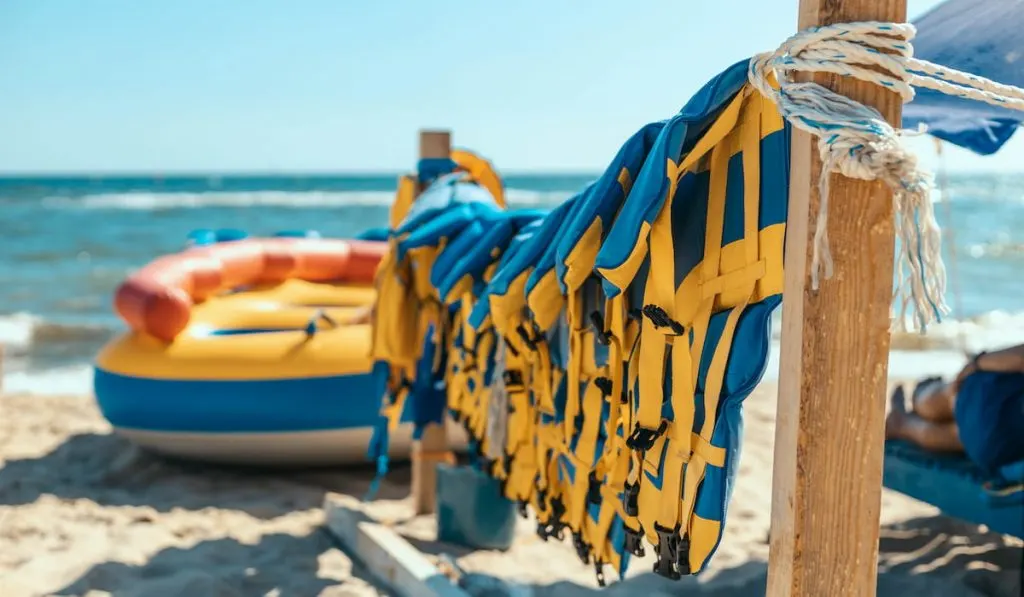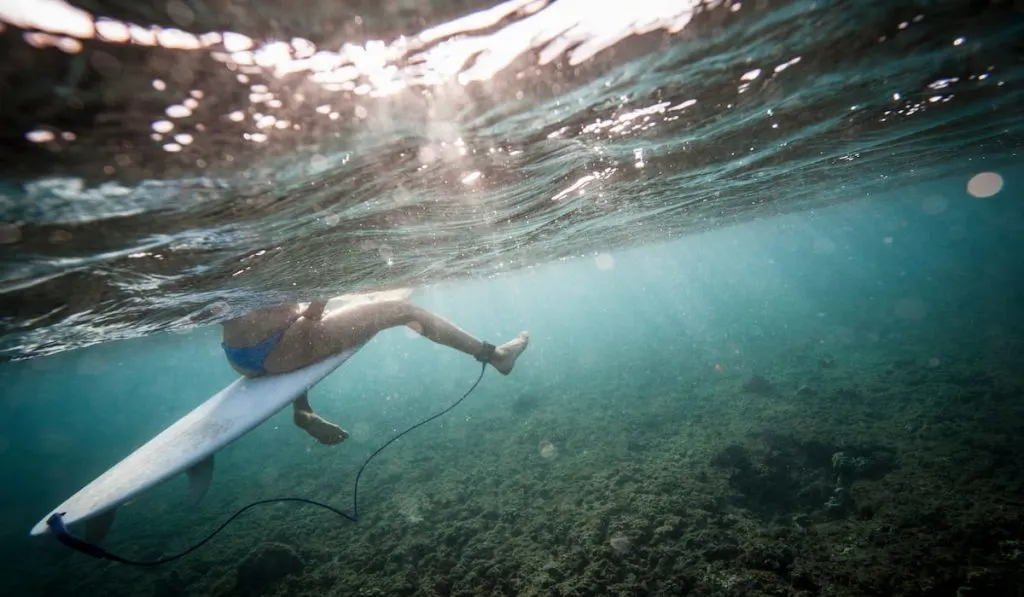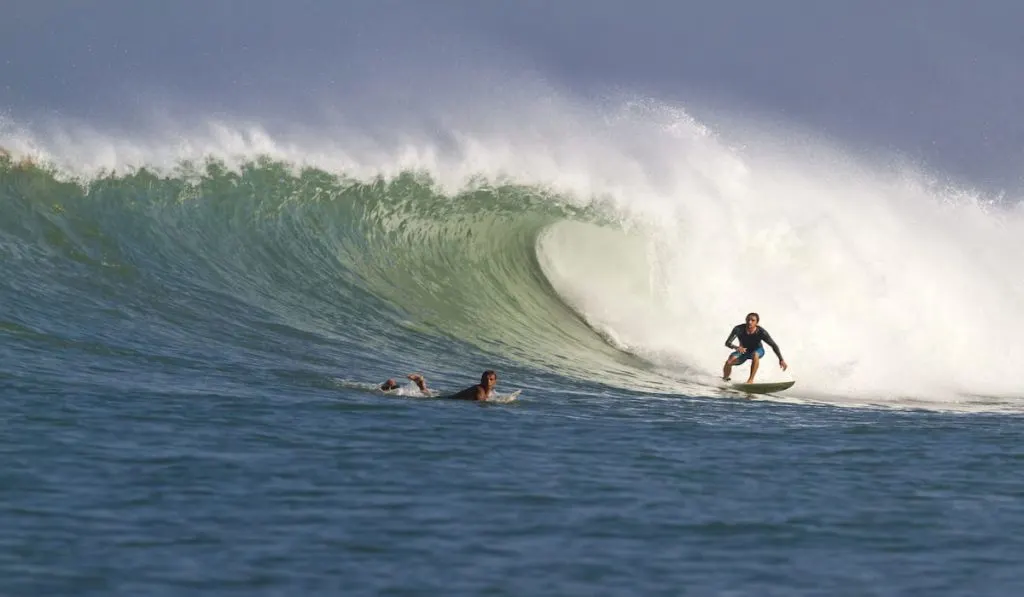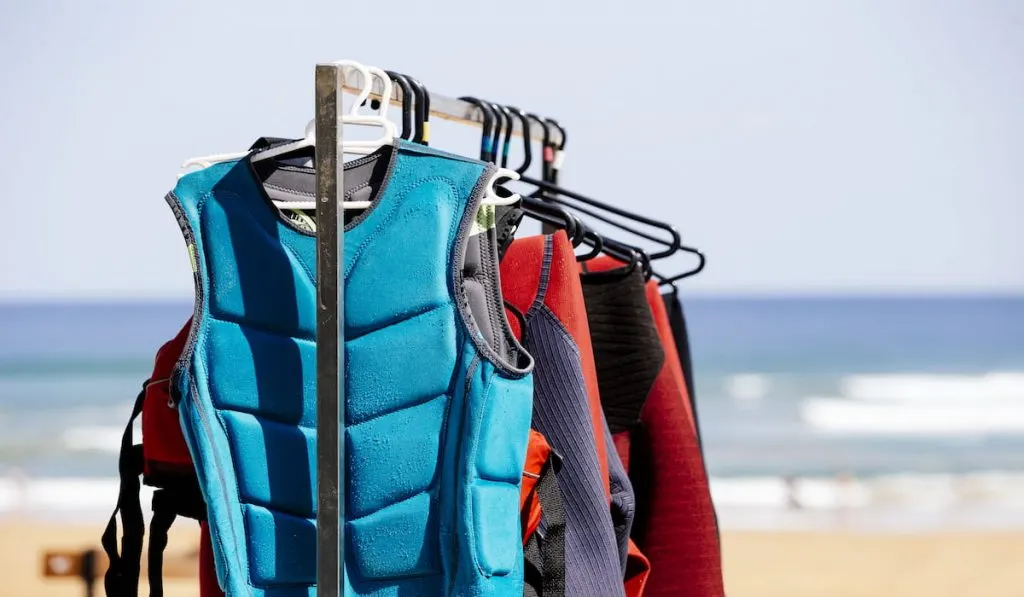We get asked a lot of questions and questions like these are generally born out of curiosity rather than people actually wanting to wear life jackets while surfing.
I understand that safety is always a priority and that is why we decided to answer the question, can surfers wear life jackets, and should they wear them?
Surfers can most definitely wear a life jacket when surfing. However, most of them choose not to. This is because a life jacket will make it extremely difficult to surf and this is especially true on smaller waves. Also, while in the impact zone, a life jacket can be quite dangerous.

In this article, we are going to talk about five reasons why you won’t normally see a Surfer wearing a life jacket. Once we have gone in-depth into those reasons we will then move on to talking about big wave surfing.
This is where surfers do take extra safety precautions. So, for everything that you need to know, keep reading.
Here’s Why Most Surfers Do Not Wear Lifejackets
Before we even start, I just want to say that if you see somebody or even if you are surfing on the outside, it means you or them probably have some surfing experience.
With that comes knowledge of the ocean. This is important to remember during this article.
Whether you are paddling out from the shore or jumping off a point, it means that you aren’t going too far and if you are surfing in normal conditions, there really is no need to wear a life jacket.
After all, you should already have enough knowledge of the ocean.
With all of that being said, I am going to list a few of the reasons that I believe are the most important as to why surfers do not really wear life jackets.
After that, we will discuss the things in that list in a little bit more detail.
- Lifejackets restrict your movement and flexibility.
- Paddling with a lifejacket on will be hard.
- A surfboard is already a flotation device.
- When stuck in the impact zone, a lifejacket could be dangerous.
- It looks silly.
Side Note: “The backline” and “The outside” both mean the same thing. It refers to the furthest wave breaks on a beach or reef break. The “inside” and “mid-break” both mean the waves that break between the shore (shore-break) and the outside. Different areas call it one of these two words for each zone.
Life jackets Restrict Movement And Flexibility
I can almost immediately assume that when you saw this, you thought about surfers doing carves, turns, ariels, and floaters.
However, flexibility and movement are important even before all of that.

Even just standing up on a surfboard requires some flexibility and movement. The steeper the drop, the more flexibility you need to bend your knees when dropping down the wave.
Then, doing bottom turns also requires flexibility. Wearing a life jacket will make this much harder than it has to be.
Paddling With A Life Jacket Will Be Hard
When you are paddling out, whether it be from the shore or from jumping off the point, you need to get your timing right.
This is especially important on beach breaks as there tends to be no channel for you to paddle through without having to duck-dive.
So, when you are paddling, you want everything to be streamlined. If you are wearing a life jacket, you will become bulkier and paddling can become quite a problem.
Remember, life jackets keep you afloat, they are not built to streamline your paddling.
Side Note: In surfing, a “channel” refers to an area where waves do not break. It helps surfers paddle out without too many waves breaking on their heads. There is also often a current that helps surfers paddle faster.
A Surfboard Is Already A Flotation Device
So, this is probably the most obvious. Your surfboard is kind of a flotation device already. Yes, you can still run into problems. This is true even on normal size waves.
Because your board is already a flotation device, there is no need for a life jacket to be honest, at least in most cases.
With all of that being said, A wave that is strong enough can hold your board down and you will want to get your head above water as quickly as possible.

If you run into a spot of trouble and start to get tired, remember to hold onto your board to keep yourself floating.
A Life jacket Might Be A Hazard In Certain Zones
This is pretty straight forward, when you get caught in the impact zone, a life jacket can be quite dangerous.
This is because you need to get underneath waves as they are about to break your head.
Obviously, a life jacket is built to do the opposite. It is meant to keep you afloat.
So, it makes it very difficult for you to get underneath waves, and being stuck in the impact zone you are going to get the full
Force of every wave that breaks on you. Trust me, you want to get as deep underneath the wave as possible.
It Looks Silly In Normal Conditions
I don’t really like saying stuff like this but I have to for this article. If you wear a lifejacket in normal conditions while surfing your normal beach break or reef break, you are going to look a little bit silly.
While image doesn’t really matter when you are surfing, you still don’t want to be the laughing stock of the day.
If you are scared to surf on the outside, stick to the mid-break or be as close to shore as possible until you get more comfortable. However, I cannot specifically tell you not to wear a life jacket.
Do Big Wave Surfers Need Life jackets?
Surfing big waves and surfing normal waves are like two completely different sports. I know some excellent surfers who will not, for any reason, paddle out in big waves in spots such as Jaws, Chopu, Mavericks, and/or Nazare.
The question is, do big wave surfers need lifejackets, and do they wear them?
I have seen some cases where people try and wear a life jacket but it still doesn’t really work out for them.
On big waves, you still need to be able to move and be flexible. In fact, it can be more critical to be flexible when surfing big waves.

If you listen to a few stories from professional big wave surfers, you will get the chills.
A lot of them have been in situations where they genuinely thought that they had just ridden their last wave and so, a lot of them are trying out new devices to keep them afloat.
These devices include:
- Inflatable wetsuits
- Inflatable vests
While these are still not very popular, they are becoming more used by professional big wave surfers. Let’s take a quick look at both of these.
Inflatable Wetsuits
The inflatable wetsuit basically just has a relatively small air canister right at the back with a bladder that wraps around the suit.
If you are caught underneath a wave, and it is holding you down for an extended period of time, all you have to do is pull the string. The canister will release air into the bladder and you will float up.

Here is a quick video from Shane Dorian the surfing Legend about the inflatable wetsuit and why he decided to speak to Billabong about it. Shane Dorian introduces the Billabong V1 big wave flotation wetsuit.
I know that video is pretty old but since then, a lot of the best wetsuit manufacturers have released their own versions.
Inflatable Vests
The inflatable vest is a similar concept to the wetsuit. However, the iterations we have seen are a little bit more clunky than the wetsuit. It has multiple canisters and multiple strings that you pull.
Here is a video of a reporter talking about the inflatable vest at a big wave surfing competition. How Inflatable Vests Work in Big-Wave Surfing.
Conclusion
Wow, that was quite an intense article to get through. I guess when it comes to safety I do take some extra time in explaining everything as thoroughly as I can.
Look, at the end of the day you should surf however you want and whichever way makes you feel more comfortable, is how you should surf.
However, there will come a point where you won’t want to wear the life jacket anymore.
